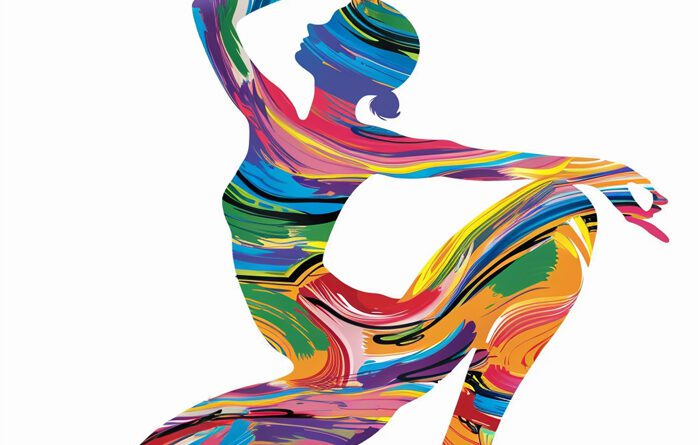If you’re new to yoga and looking to enhance your practice, let us introduce you to the Bridge Pose (Setu Bandha Sarvangasana). As a yoga instructor specializing in working with beginners, we understand the importance of starting with the basics. The Bridge Pose is a foundational pose that can help you build strength and flexibility in your back, hips, and legs. It also provides a gentle stretch for your chest and shoulders. In this article, we’ll explore the benefits of the pose, guide you through the step-by-step instructions, and offer modifications to ensure your utmost comfort and safety. So, whether you’re seeking a new challenge or simply looking to add variety to your practice, the Bridge Pose is a wonderful pose to incorporate into your routine. Let’s dive in!
What is the Bridge Pose?
The Bridge Pose, also known as Setu Bandha Sarvangasana in Sanskrit, is a yoga asana that involves lying on your back and lifting your hips off the ground, creating a bridge-like shape with your body. It is a foundational pose commonly practiced in yoga classes and has a multitude of physical and mental benefits.
Definition
The Bridge Pose gets its name from the shape it creates with your body, resembling a bridge. In this pose, you lie on your back with your knees bent and feet flat on the ground, hip-width apart. By pressing your feet into the ground, you lift your hips up towards the ceiling while keeping your shoulders and head on the mat. This pose engages various muscle groups, including the glutes, hamstrings, and core.
Origin
The Bridge Pose has its roots in hatha yoga, which originated in ancient India thousands of years ago. The term “Setu Bandha Sarvangasana” is derived from the Sanskrit words “setu” meaning “bridge,” “bandha” meaning “lock,” “sarva” meaning “whole,” and “angasana” meaning “pose.” This pose was traditionally performed to prepare the body for more advanced inverted poses, like shoulderstand or headstand. Today, it is widely practiced as a standalone pose due to its numerous benefits.
Benefits of the Bridge Pose
The Bridge Pose offers both physical and mental benefits, making it a valuable addition to any yoga practice.
Physical Benefits
The Bridge Pose helps strengthen and stretch various muscles in the body. It targets the glutes, hamstrings, and lower back muscles, thereby improving their strength and flexibility. Regular practice of this pose can also relieve tension in the neck and shoulders, reduce back pain, and enhance spine mobility. Additionally, it stimulates the abdominal organs and improves digestion.
Mental and Emotional Benefits
In addition to its physical benefits, the Bridge Pose has several mental and emotional benefits. It can help calm the mind, reduce stress, and alleviate mild depression and anxiety. When practiced with mindfulness, it promotes self-awareness and encourages a deep connection between the mind and body.
Contraindications and Precautions
While the Bridge Pose is generally safe for most individuals, there are a few contraindications and precautions to keep in mind to ensure a safe practice.
Contraindications
- Avoid practicing the Bridge Pose if you have a recent or severe injury to the neck, shoulders, or spine.
- If you have a hip or knee injury, it is advisable to consult with a qualified yoga instructor or healthcare professional before attempting this pose.
- Pregnant women should consult with their healthcare provider before practicing the Bridge Pose.
Precautions
- If you experience any pain or discomfort in the lower back or neck while performing the Bridge Pose, it’s important to modify the pose or come out of it completely.
- Always listen to your body and avoid overexertion. Start with gentle movements and gradually increase the intensity as you build strength and flexibility.
Step-by-Step Guide to the Bridge Pose
To practice the Bridge Pose, follow the step-by-step guide below:
Starting Position
- Lie on your back with your knees bent and feet flat on the ground, hip-width apart.
- Keep your arms alongside your body with your palms facing down.
The Bridge Pose Sequence
- Press your feet firmly into the ground, engaging the glutes and hamstrings.
- Inhale, and as you exhale, lift your hips off the ground while maintaining a strong connection between your feet and the mat.
- Roll your shoulders underneath you, allowing your chest to expand.
- Check that your knees are pointing forward and not collapsing inwards.
- Hold the pose for 5-10 breaths, breathing deeply and evenly.
- To release, exhale and slowly lower your hips back to the mat, vertebra by vertebra.
Variations of the Bridge Pose
The Bridge Pose can be modified and adapted to suit different levels of flexibility and experience. Two common variations are:
Supported Bridge Pose
- Place a yoga block or bolster under your sacrum to support your hips in the Bridge Pose.
- This modification allows for a gentler stretch and is suitable for individuals with limited flexibility or lower back issues.
One-Legged Bridge Pose
- Once you have mastered the basic Bridge Pose, you can challenge yourself by practicing the One-Legged Bridge Pose.
- Extend one leg straight up towards the ceiling while keeping the other leg grounded.
- This variation strengthens the glutes and hamstrings and improves balance.
Modifications for Beginners
If you are new to the Bridge Pose or have limited flexibility, these modifications can help make the pose more accessible:
Using Props
- Place a folded blanket or yoga block under your shoulders for additional support and elevation, especially if you have tight shoulders or limited mobility.
- This modification provides extra support and allows you to experience the benefits of the pose with less strain on your upper body.
Reducing the Range of Motion
- If lifting your hips all the way off the ground feels challenging, start by lifting them just a few inches.
- Gradually work towards increasing your range of motion as you gain strength and flexibility.
Common Mistakes to Avoid
To ensure a safe and effective practice of the Bridge Pose, it is important to be mindful of the following common mistakes:
Misalignments
- Avoid collapsing your knees inward. Instead, keep them pointing forward in line with your toes, maintaining a hip-width distance.
- Don’t strain or hyperextend your neck. Keep it relaxed and aligned with your spine.
Overexertion
- It’s essential to honor your body’s limits and avoid pushing yourself too hard in the pose.
- Start with a comfortable range of motion and gradually increase it over time to avoid overexertion and potential injury.
Tips for Practicing the Bridge Pose
To enhance your experience and get the most out of the Bridge Pose, consider these tips:
Alignment and Engagements
- Focus on maintaining a strong connection between your feet and the ground throughout the pose.
- Engage your glutes and hamstrings while lifting your hips, and avoid relying solely on your lower back muscles.
Breathing Technique
- Practice deep and mindful breathing while holding the Bridge Pose.
- Inhale deeply as you prepare to lift your hips, and exhale fully as you release and lower them back down.
Integrating the Bridge Pose into a Yoga Routine
The Bridge Pose can be incorporated into a yoga routine in various ways. Here are some suggestions:
Preparatory Poses
- Warm up your body with gentle stretches and movements before attempting the Bridge Pose.
- Incorporate poses like Cat-Cow, Downward Facing Dog, and Supine Spinal Twist to prepare your spine and stretch the muscles.
Sequencing with Other Poses
- The Bridge Pose can be followed by other backbends such as Upward Facing Dog or Camel Pose for a more dynamic practice.
- Alternatively, it can be paired with forward folds such as Child’s Pose or Legs-Up-The-Wall Pose to create a balanced sequence.
Conclusion
The Bridge Pose, or Setu Bandha Sarvangasana, is a versatile and accessible yoga pose with numerous physical and mental benefits. Whether you are a beginner or an experienced practitioner, incorporating the Bridge Pose into your yoga routine can help improve strength, flexibility, and overall well-being. Remember to practice with mindfulness, listen to your body, and always prioritize safety. Enjoy exploring this empowering pose and feel the transformative effects it can have on your body and mind.







